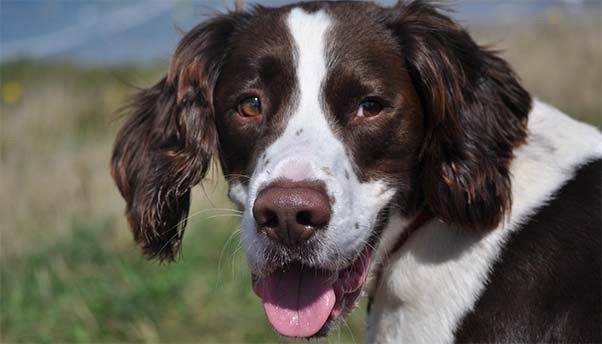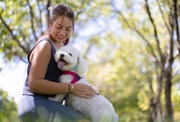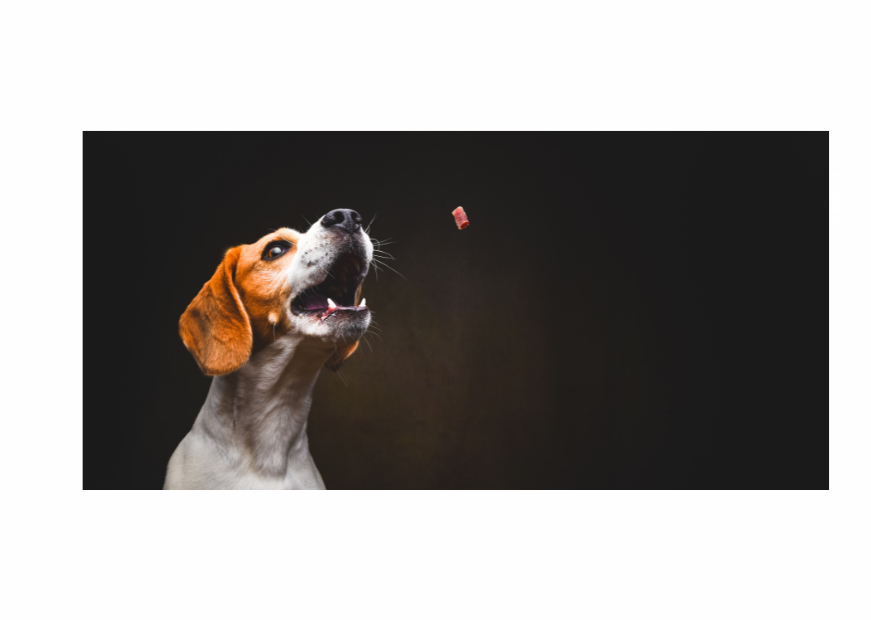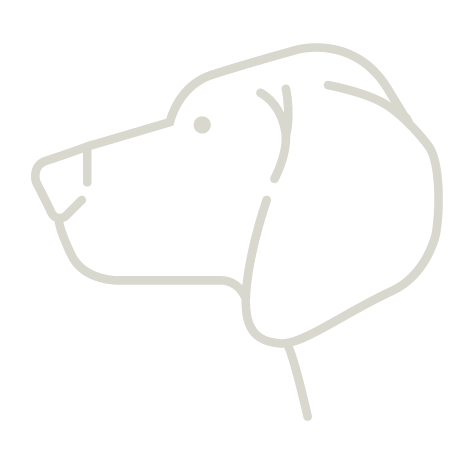Does your dog gulp their food? Why this could be a good thing!
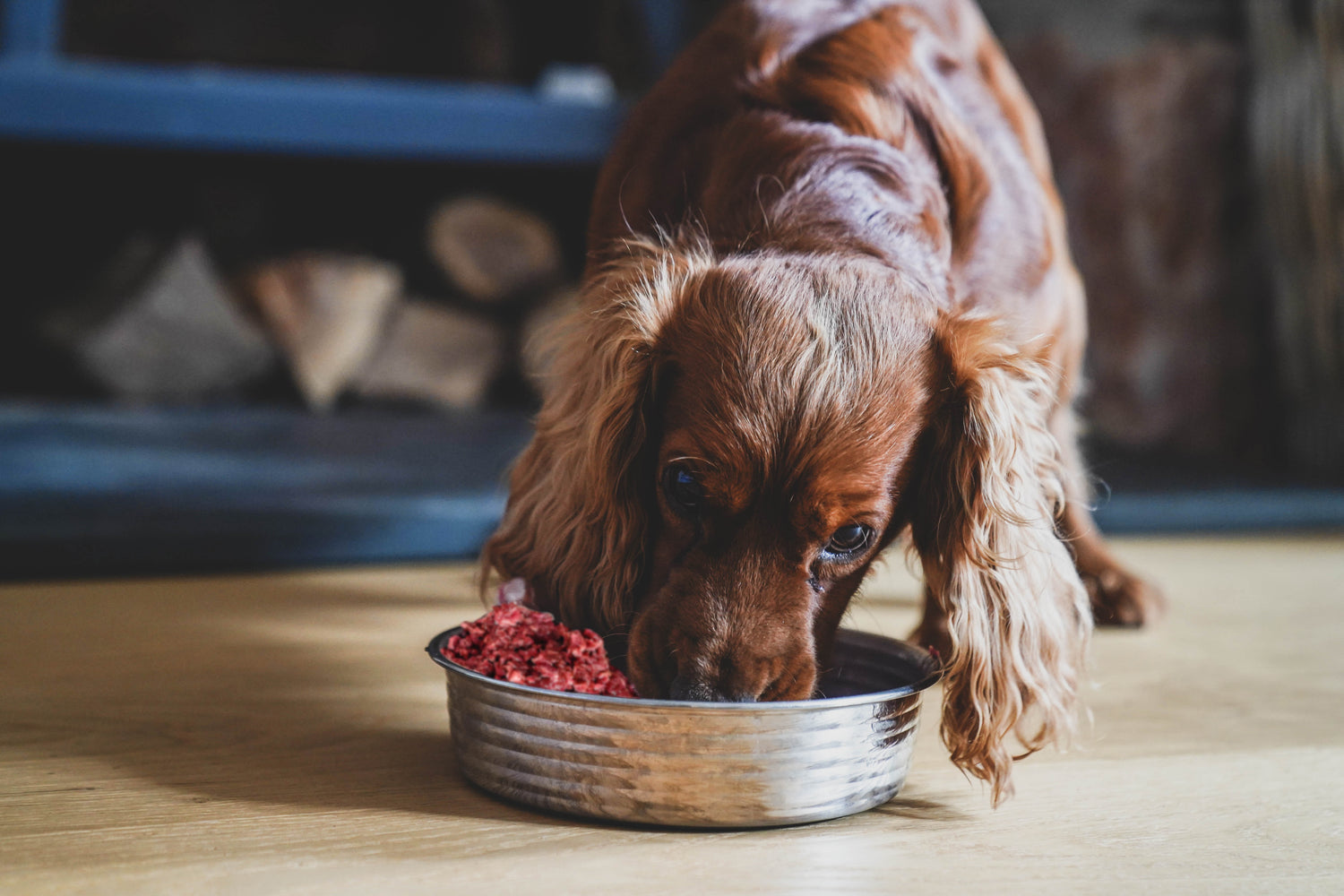
As humans we need to chew, chew and chew our food.
Many of us do not do this well and so we have grown up with an acknowledgement that chewing is healthier for us. We also genuinely like to see someone we love, be that a person or our dog, enjoying the food we have made for them. To see a dog gulp down their food can be frustrating as it goes against both those feelings.
However, we may not be aware that those beliefs can lead us to misunderstand canine biology and often make changes to our dog’s feeding regimes that we believe is helping but could instead be hindering their digestive system.
As fresh food feeders, we commonly mention that a dog’s digestive system is different to our own. We know that a dog can handle raw meat and bone, whereas we cannot. It is that difference between our biology and theirs that also provides the answer to our frustration and the truth of the benefits of canine gulping behaviours.
We chew in order to begin the process of digestion in the mouth, using the vast number of digestive enzymes that are released as we do so. The food then goes into our stomach pre-digested and doesn’t stay long before heading down into the small intestine to be fermented and further broken down.
Dogs on the other hand, have virtually no digestive enzymes in their mouth* just a saliva supply with a very tiny amount of amylase. They cannot break down food in their mouth by chewing it and mixing it with saliva in the way that we do. They have a particularly stretchy, flexible oesophagus too. Anyone who has seen a cat swallow a whole mouse (I’ve seen my cat do this twice; it’s quite a sight!) knows how flexible an oesophagus can be.
For a dog, the food stays in the stomach much longer, double that of our stomach, and this is where their chewing happens. It is their stomach that essentially chews for them**; the stomach walls flex repeatedly and by doing so release more enzymes or acidity with each chew, or churn, of the food.
One of the reasons a fresh diet supports a dog so well is because it requires more stomach churning*** and thus releases better acidity that kills off opportunistic bacteria and protects the microbiome of the small intestine, whereas processed dog food simply disintegrates, neither needing nor encouraging the chewing, churning or the acidity and enzymes to be released****.
Essentially, if the dog’s stomach hasn’t got something to chew at, it doesn’t become as acidic as it should be. It needs to work at food to stay healthy. Less acidity in the stomach means the dog’s gut system is less able to cope with bacteria, dogs with weaker stomach acidity can easily develop a sensitive stomach.
Dogs need a fair amount of fresh whole food in the stomach for the churning to happen, little bits at a time will not produce the same churning. A dog’s stomach likes having something to do during feeding and digestion times! It responds favourably when it does.
By ‘slowing a dog down’ we leave them open to having less stomach acidity, less digestive enzymes and thus less protected from opportunistic bacteria or microbiome imbalances.
Stop worrying that your dog eats quickly, it’s actually healthier for them to do so, and extremely natural. Even a small, but still whole, raw meaty bone is safe to be gulped down and chewed in the dog’s stomach, as it should be. Only those with brachycephalic breeds would need to shy away from raw meaty bones being gulped, but the blended food itself could still be.
What about enrichment?
The myriad of special bowls or mats we turn to in our efforts to slow our dogs down are playing right into our misunderstanding of canine stomach biology.
Enrichment games are invaluable for emotional contentment, for calming a dog emotionally so they are less anxious or busy. At times when the important enrichment of stripping and shredding raw meaty bones is limited, then other enrichment opportunities must be used to compensate. Just not at a mealtime.
True enrichment.
The single, most important way to present food is one that follows the need for the enrichment during eating, holds the relevant nutrition and allows for optimal digestive ability. This way is to feed raw meaty bones. You should, ideally, aim to feed those as at least one of the meals your dog eats each day.
By pulling, stripping and tearing at food the dog gets to clean their teeth and receive the vital reward food can offer them. As the teeth and mouth tear at the food, this also lets the body know meat-based food is going to appear in the stomach*****, in a way that any chewing would fail to do in a carnivore.
~
* Mendel, L. Yale University. Is the Saliva of a Dog Amylolytically Active. (1907). http://www.jbc.org/content/3/2/135.full.pdf
** https://www.whole-dog-journal.com/health/digestion/the-canine-digestion-process/
*** Gastric acid secretory value of different foods.
Saint-hilaire, S. ; Lavebs, M. K. ; Kennedy, J. ; Code, C. F.
Gastroenterology 1960 Vol.39 pp.1-1 / https://pubmed.ncbi.nlm.nih.gov/14440828/
**** https://veteriankey.com/digestion-and-absorption/
***** Veterinarian Dr Tom Lonsdale www.rawmeatybones.com
